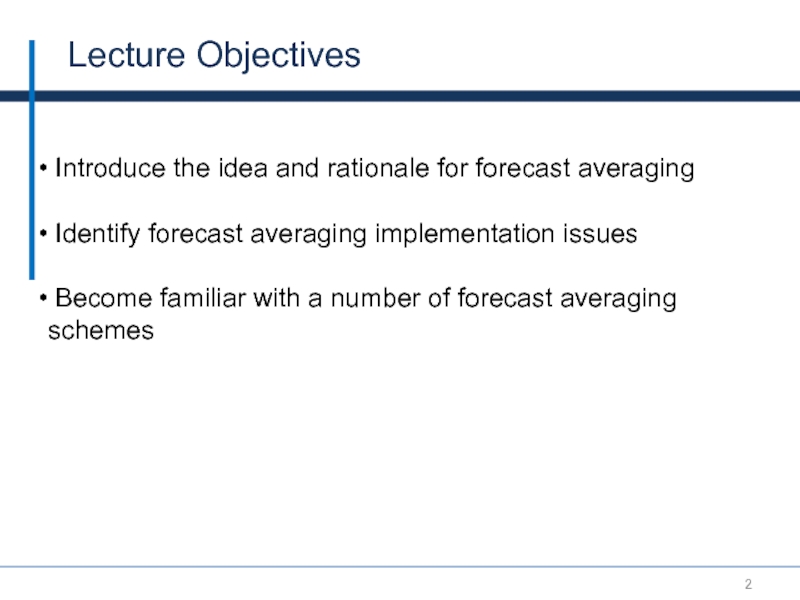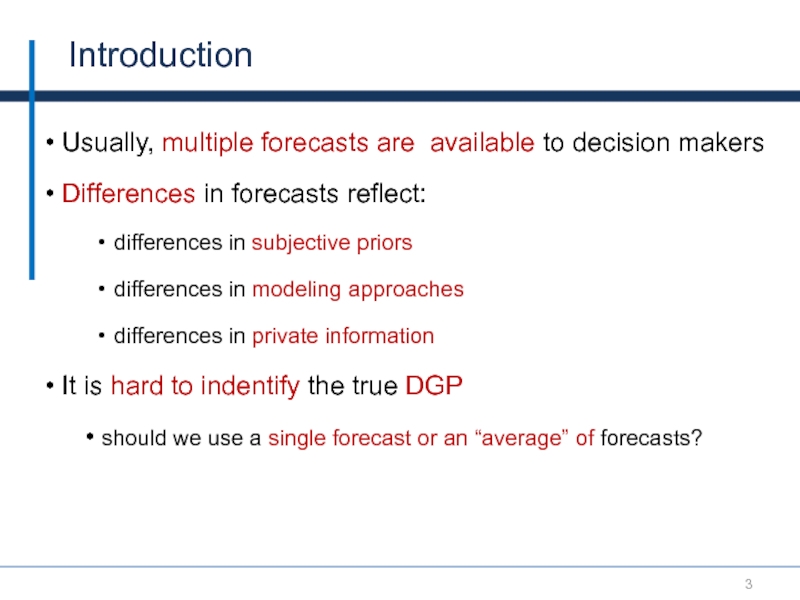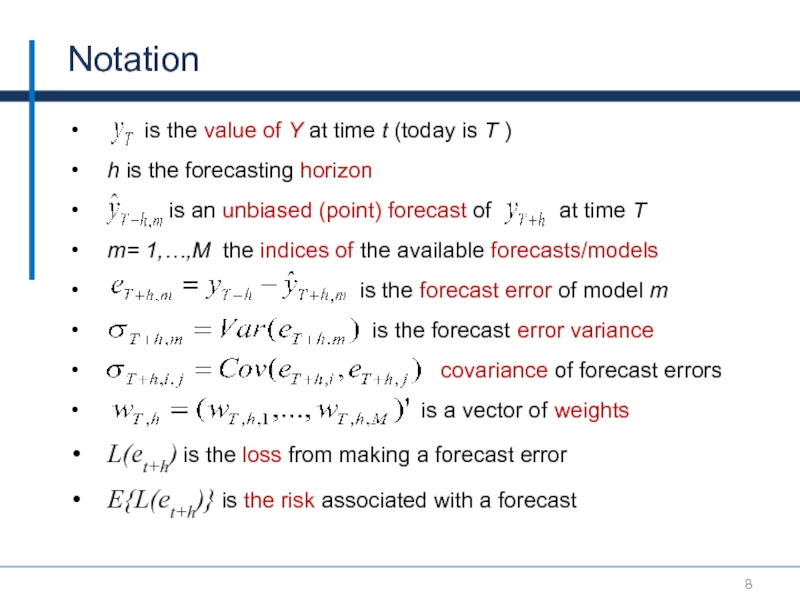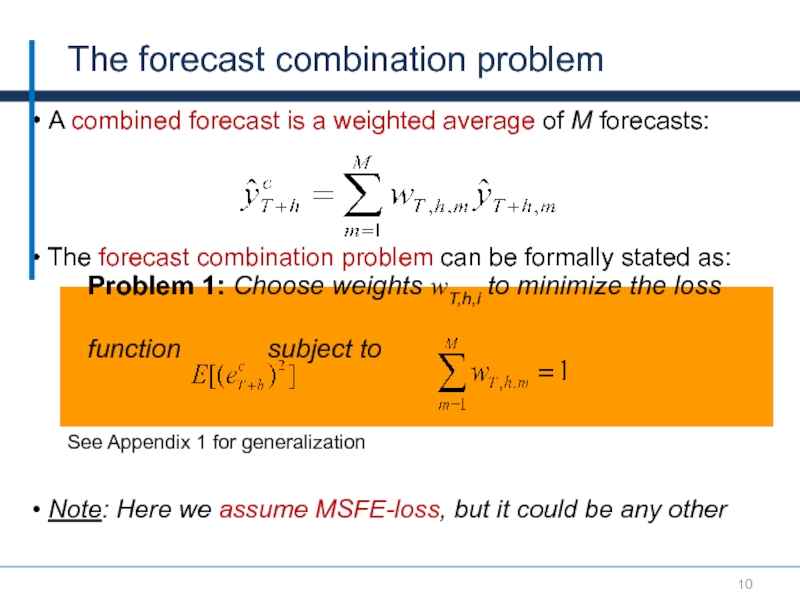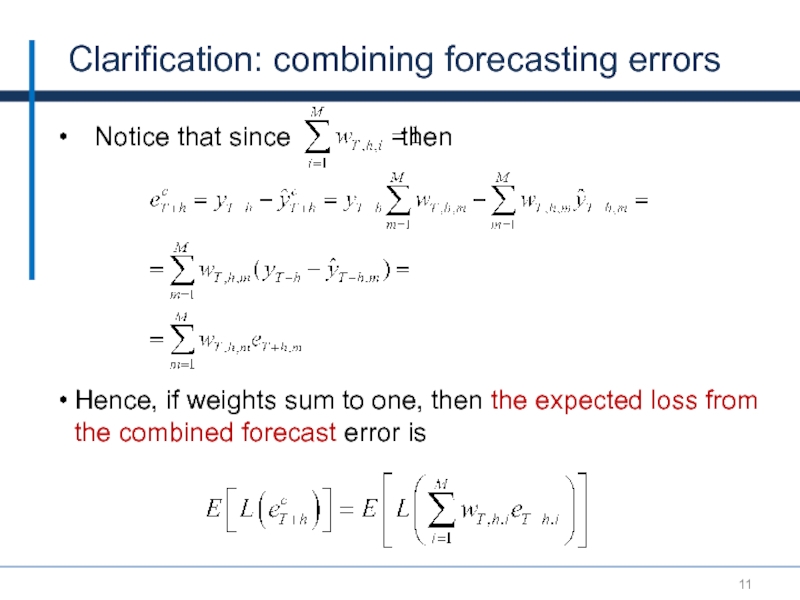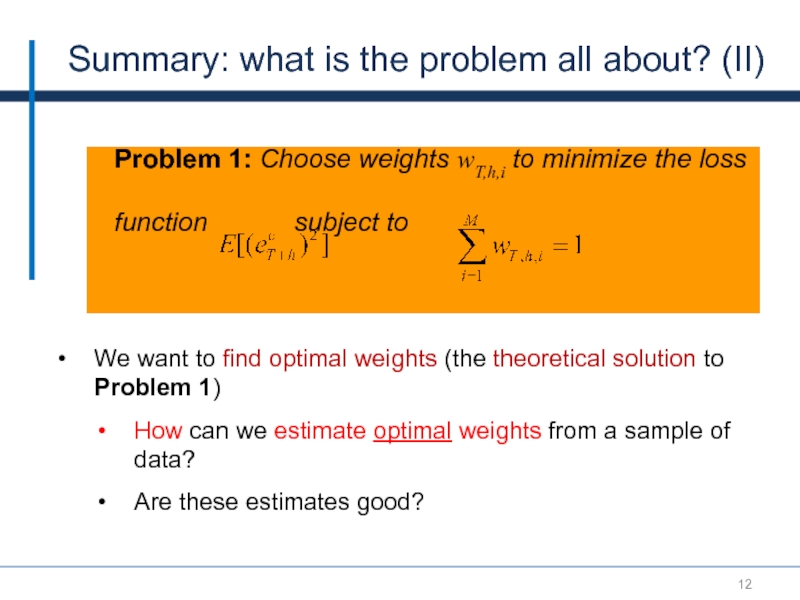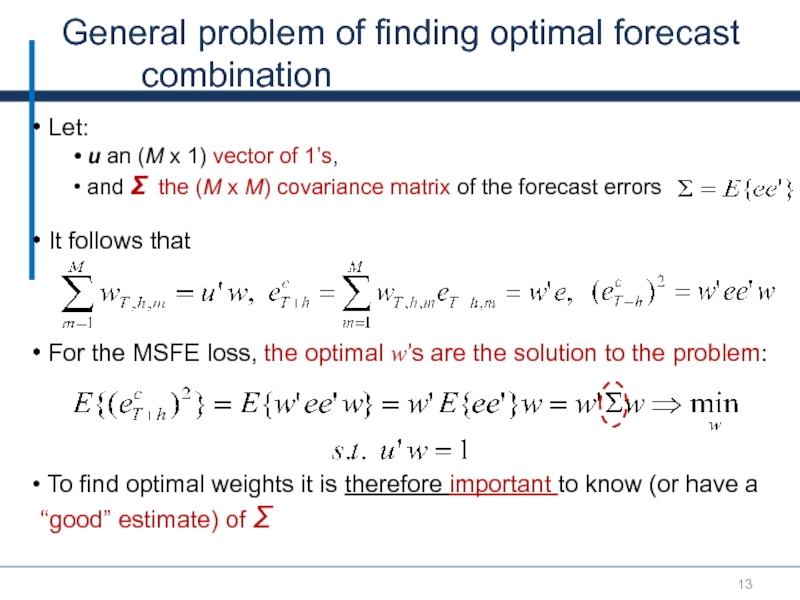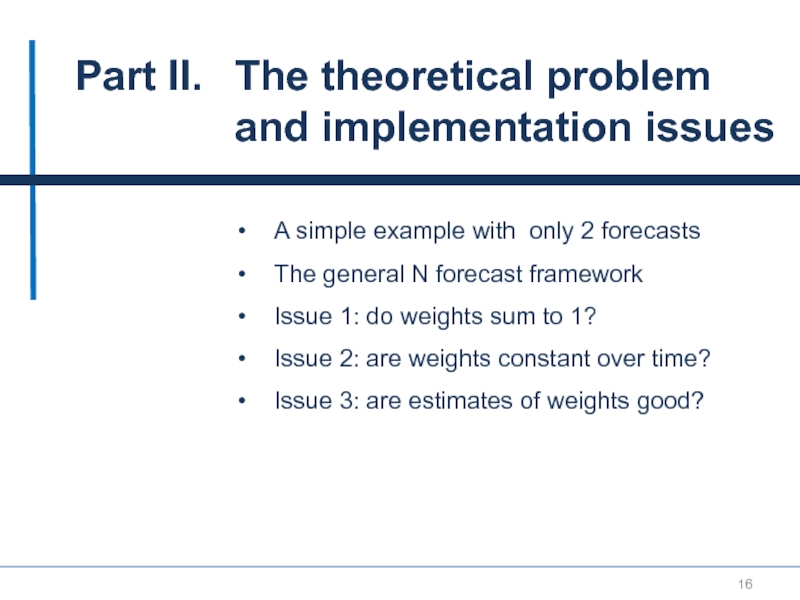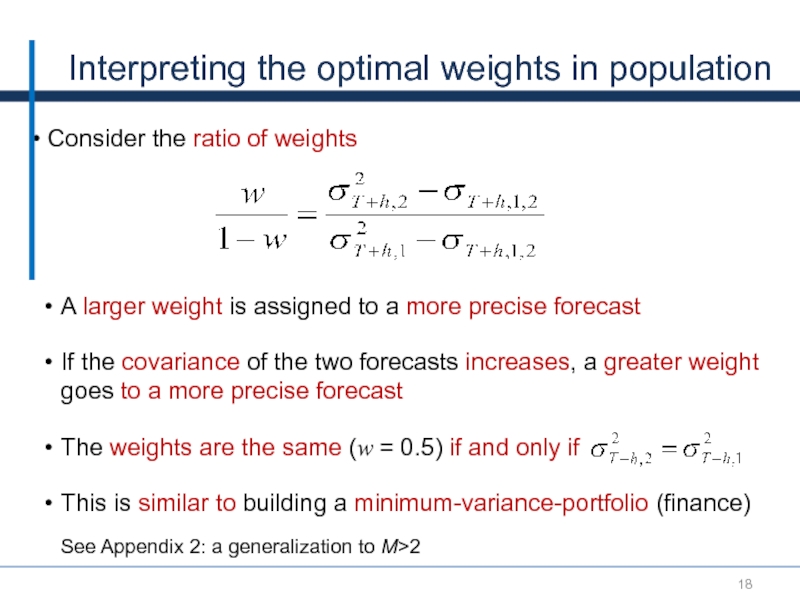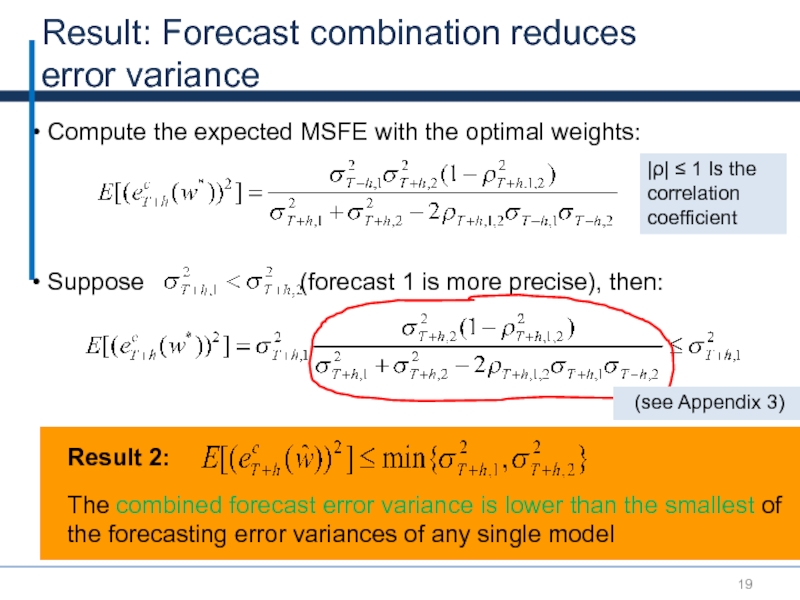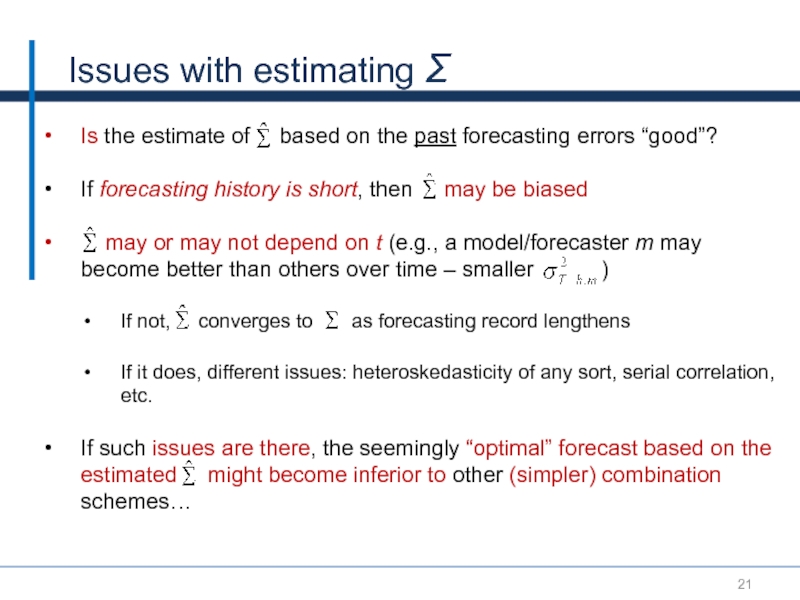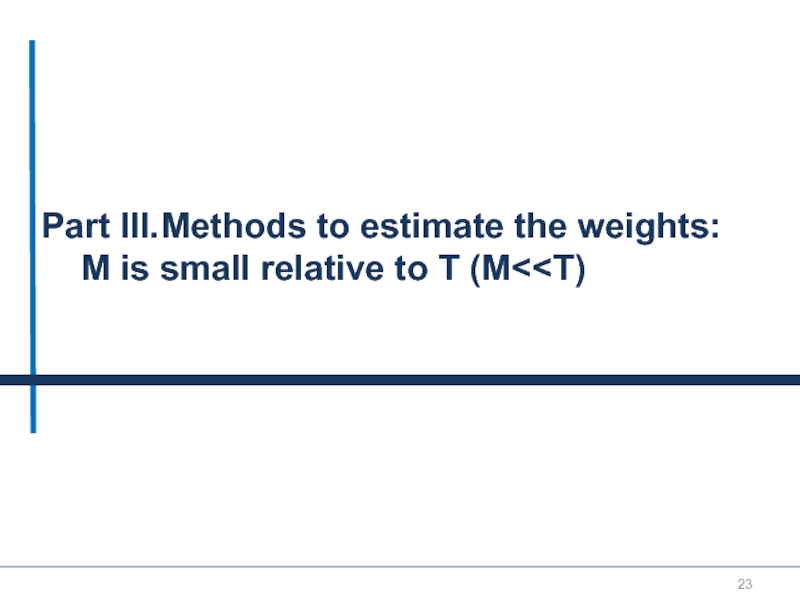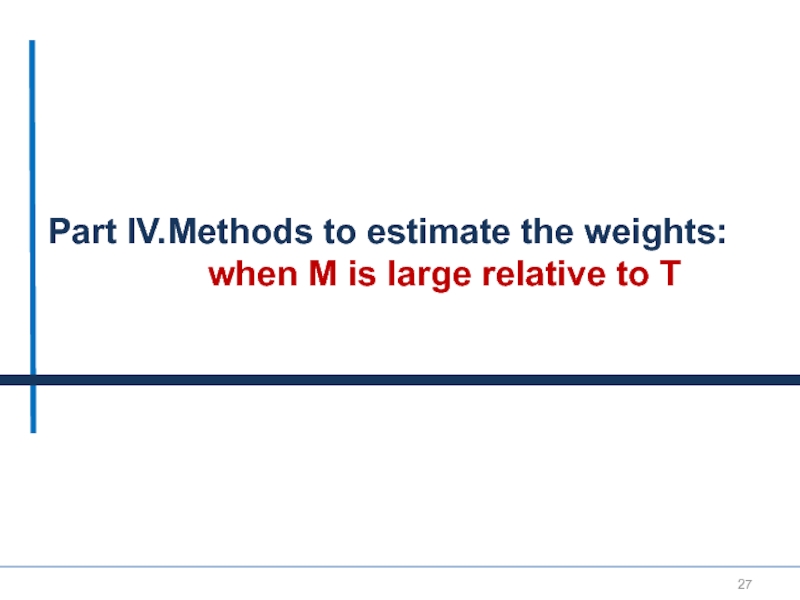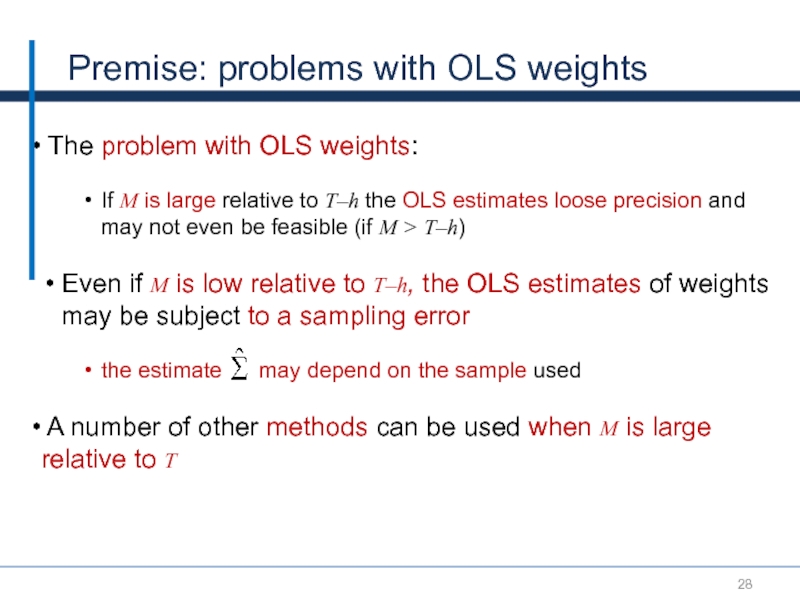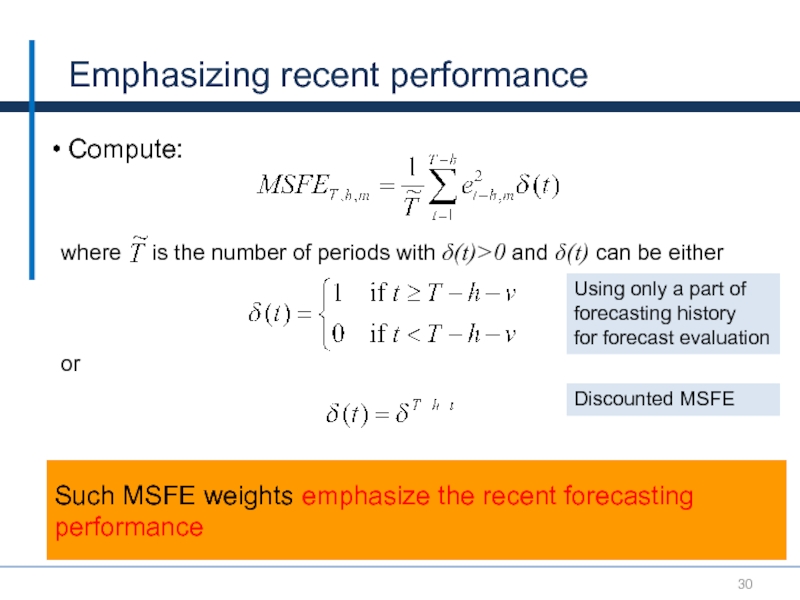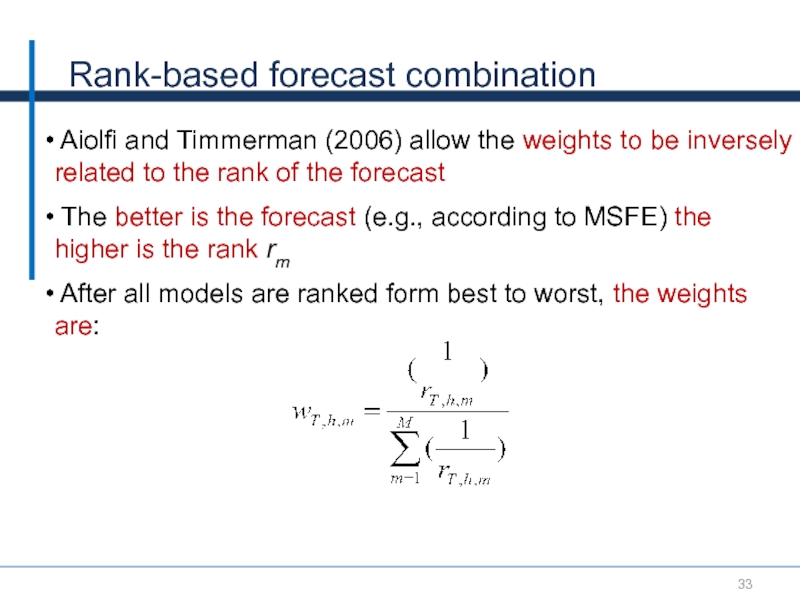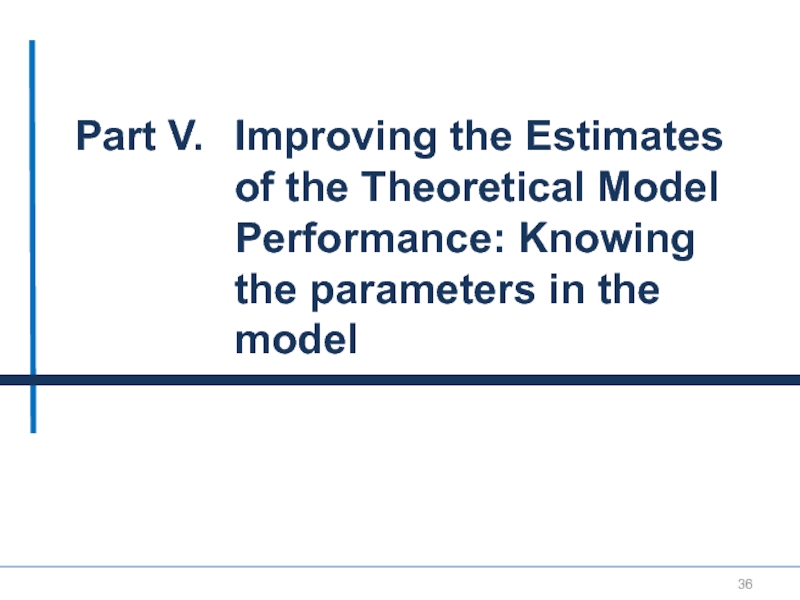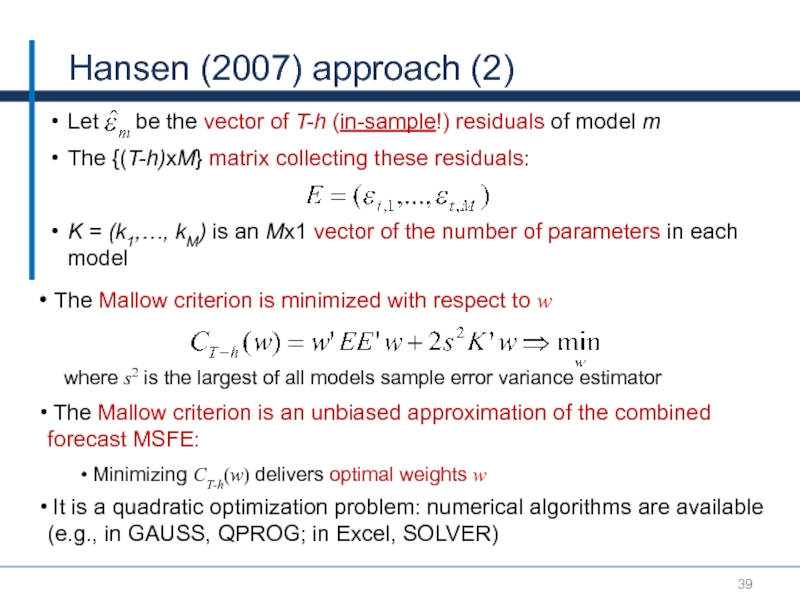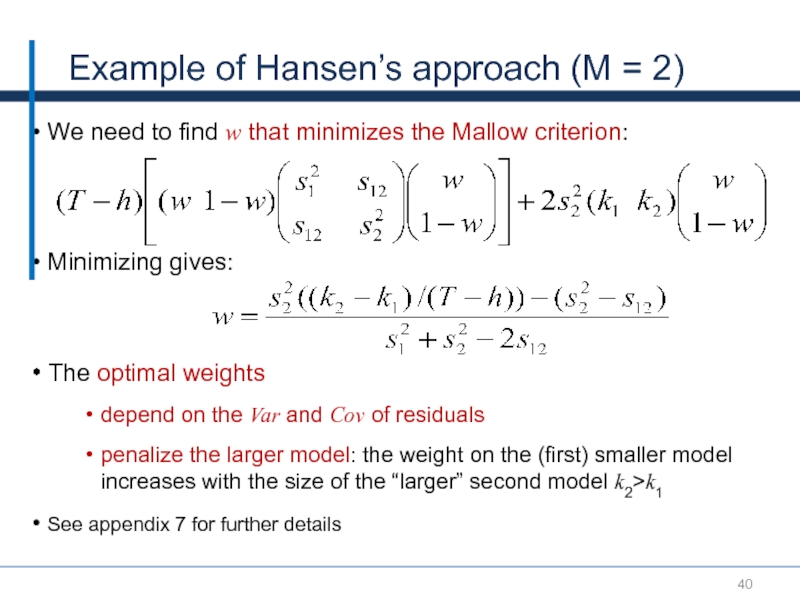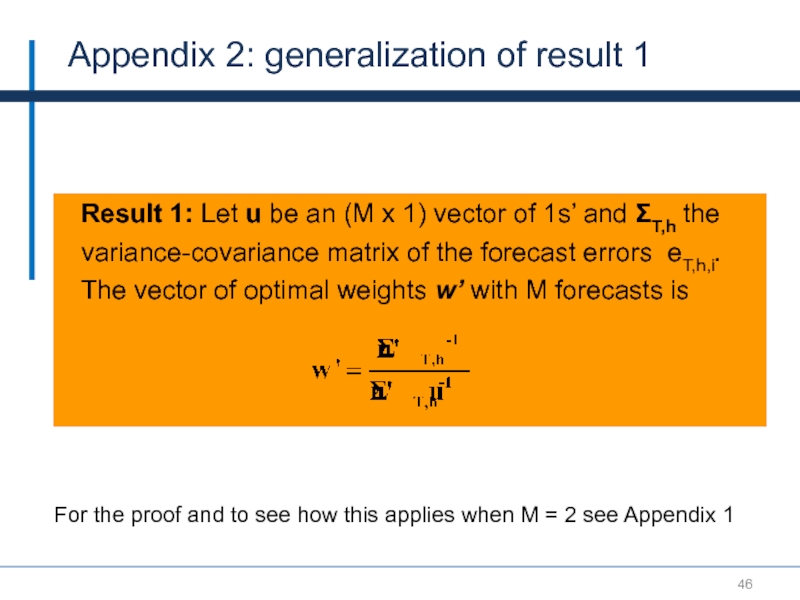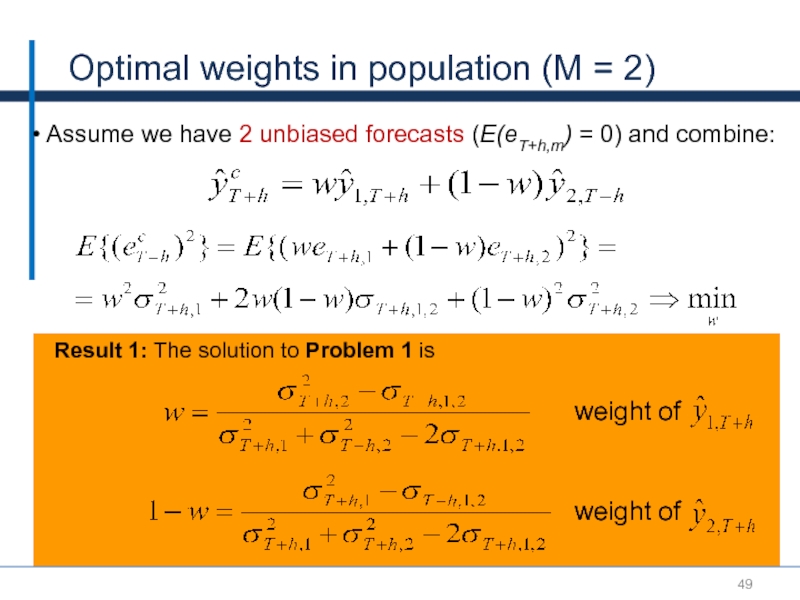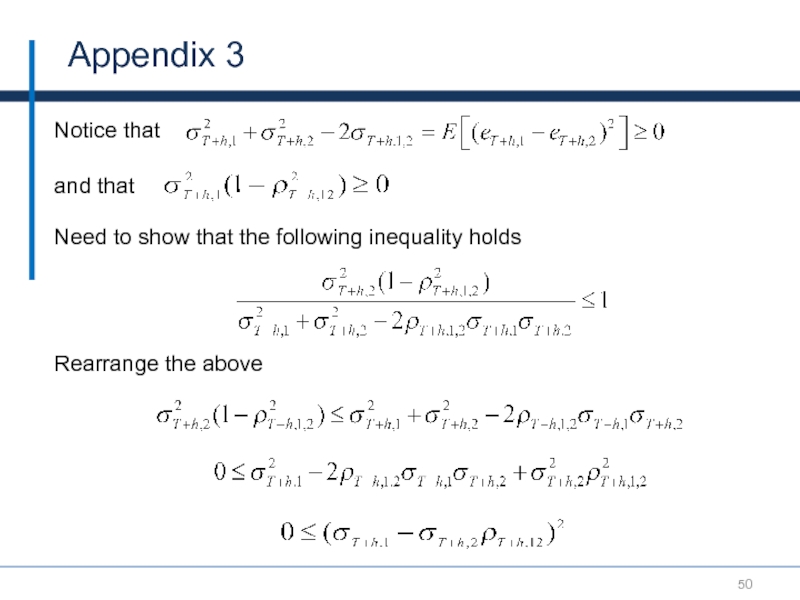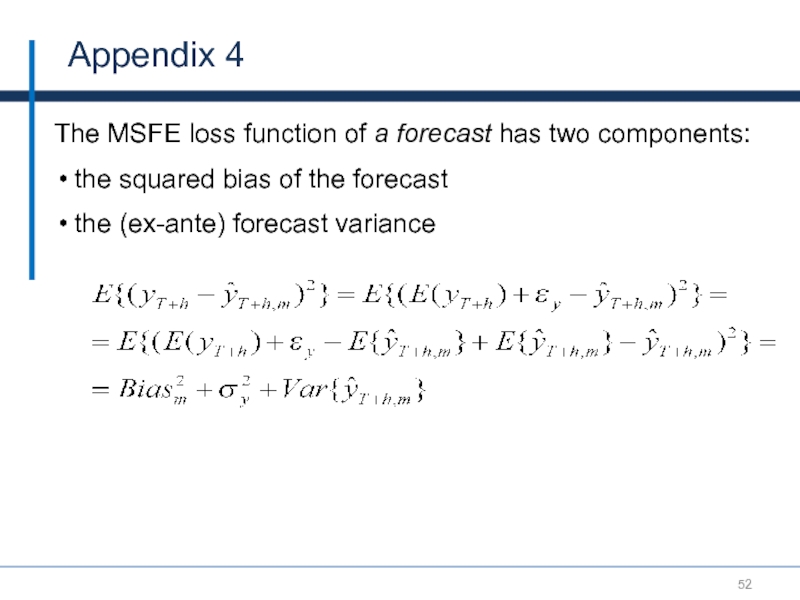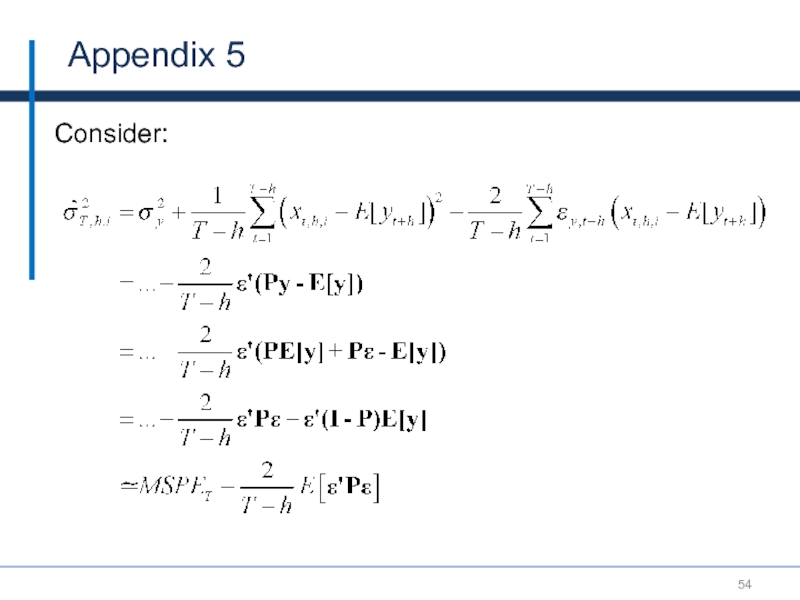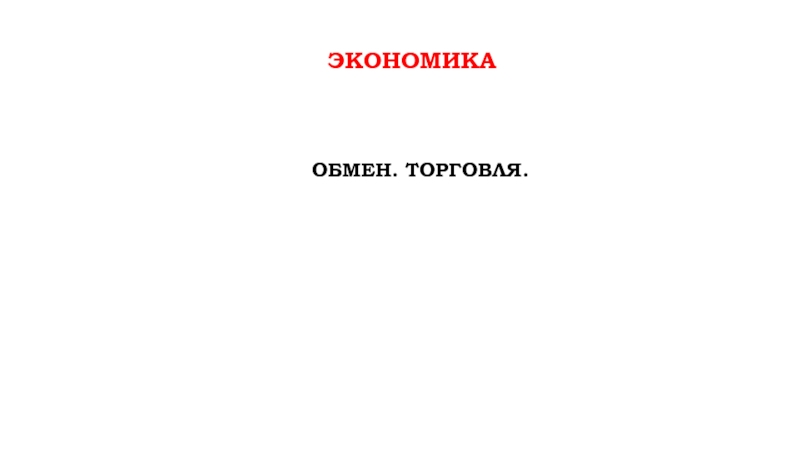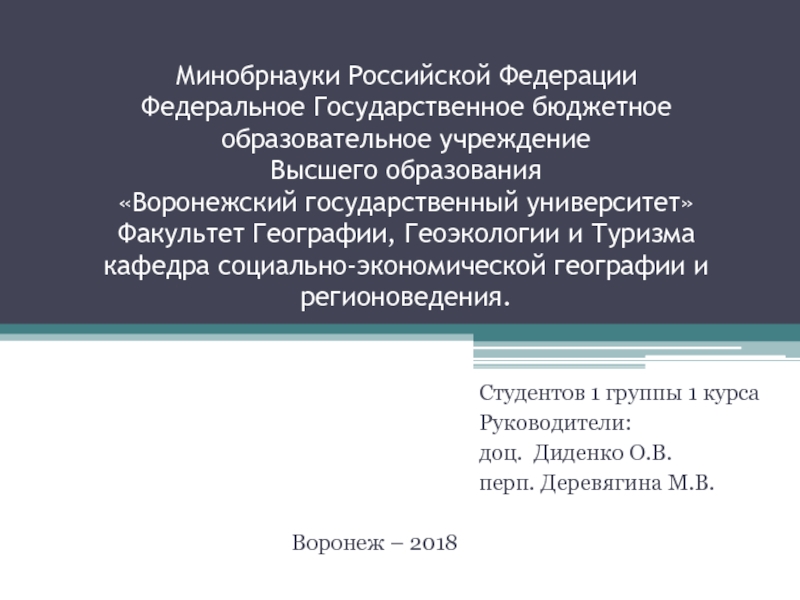This training material is the property of the International Monetary Fund (IMF) and is intended for use in IMF’s Institute for Capacity development (ICD) courses. Any reuse requires the permission of ICD.
- Главная
- Разное
- Дизайн
- Бизнес и предпринимательство
- Аналитика
- Образование
- Развлечения
- Красота и здоровье
- Финансы
- Государство
- Путешествия
- Спорт
- Недвижимость
- Армия
- Графика
- Культурология
- Еда и кулинария
- Лингвистика
- Английский язык
- Астрономия
- Алгебра
- Биология
- География
- Детские презентации
- Информатика
- История
- Литература
- Маркетинг
- Математика
- Медицина
- Менеджмент
- Музыка
- МХК
- Немецкий язык
- ОБЖ
- Обществознание
- Окружающий мир
- Педагогика
- Русский язык
- Технология
- Физика
- Философия
- Химия
- Шаблоны, картинки для презентаций
- Экология
- Экономика
- Юриспруденция
Forecast combinations презентация
Содержание
- 1. Forecast combinations
- 2. Lecture Objectives Introduce the idea and
- 3. Introduction Usually, multiple forecasts are available
- 4. Introduction Disadvantages of using a single
- 5. Outline of the lecture What is a
- 6. Part I. What is a combination of forecasts?
- 7. General framework Today (at time T)
- 8. Notation is the value
- 9. Interpretation of loss function L(e) Squared error
- 10. A combined forecast is a weighted
- 11. Clarification: combining forecasting errors Notice that since
- 12. Summary: what is the problem all about?
- 13. General problem of finding optimal forecast combination
- 14. Issues and clarifications Do weights have
- 15. Summary: what is the problem
- 16. Part II. The theoretical problem and implementation issues
- 17. Optimal weights in population (M =
- 18. Interpreting the optimal weights in population
- 19. Result: Forecast combination reduces error variance
- 20. Estimating Σ The key ingredient for
- 21. Issues with estimating Σ Is the
- 22. Optimality of equal weights The simplest
- 23. Part III. Methods to estimate the weights: M is small relative to T (M
- 24. To combine or not to combine?
- 25. OLS estimates of the optimal weights
- 26. Reducing the dependency on sampling errors
- 27. Part IV. Methods to estimate the weights: when M is large relative to T
- 28. Premise: problems with OLS weights The
- 29. MSFE weights (or relative performance weights)
- 30. Emphasizing recent performance Compute: where
- 31. Shrinking relative performance Consider instead As
- 32. MSFE weights ignore correlations between forecasting
- 33. Rank-based forecast combination Aiolfi and Timmerman
- 34. Trimming In forecast combination, it is
- 35. Example Stock and Watson (2003): relative
- 36. Part V. Improving the Estimates of the Theoretical Model Performance: Knowing the parameters in the model
- 37. Question So far we assumed that
- 38. Hansen (2007) approach For a process
- 39. Hansen (2007) approach (2) Let
- 40. Example of Hansen’s approach (M = 2)
- 41. Conclusions – Key Takeaways Combined forecasts imply
- 42. Thank You!
- 43. References Aiolfi, Capistran and Timmerman, 2010, “Forecast
- 44. Appendix
- 45. Appendix 1: generalization of problem 1 Let
- 46. Result 1: Let u be an (M
- 47. Appendix 2: generalization of result 1 Let
- 48. Appendix 2: generalization of result 1 (M
- 49. Optimal weights in population (M =
- 50. Appendix 3 Notice that Need to show
- 51. Appendix 4: trading-off bias vs. variance
- 52. Appendix 4 The MSFE loss function of
- 53. Appendix 5 Suppose that
- 54. Appendix 5 Consider:
- 55. Appendix 6: Adaptive weights Relative performance
- 56. Appendix 7: Example of Hansen’s approach (M
Слайд 1Forecast Combinations
Presenter
Mikhail Pranovich
Joint Vienna Institute/ IMF ICD
Macro-econometric Forecasting and Analysis
JV16.12, L09,
Слайд 2Lecture Objectives
Introduce the idea and rationale for forecast averaging
Identify
Become familiar with a number of forecast averaging schemes
Слайд 3Introduction
Usually, multiple forecasts are available to decision makers
Differences in
differences in subjective priors
differences in modeling approaches
differences in private information
It is hard to indentify the true DGP
should we use a single forecast or an “average” of forecasts?
Слайд 4Introduction
Disadvantages of using a single forecasting model:
may contain misspecifications of
e.g., some variables are missing
one statistical model is unlikely to dominate all its rivals at all points of the forecast horizon
Combining separate forecasts offers :
a simple way of building a complex, more flexible forecasting model to explain the data
some insurance against “breaks” or other non-stationarities that may occur in the future
Слайд 5Outline of the lecture
What is a combination of forecasts?
The theoretical problem
Methods to assign weights
Improving the estimates of the theoretical model performance
Conclusion – Key Takeaways
Слайд 6Part I. What is a combination of forecasts?
General framework and notation
The forecast
Issues and clarifications
Слайд 7General framework
Today (at time T) we want to forecast the
We have M different forecasts:
model-based (econometric model, or DSGE), or judgmental (consensus forecasts)
the model(s) or judgment(s) are our own or of others
some models or information sets might be unknown: only the end product – forecasts – are available
How to combine M forecasts into one forecast?
Is there any advantage in combining vs. selecting the “best” among the M forecasts?
Слайд 8Notation
is the value of Y at time t
h is the forecasting horizon
is an unbiased (point) forecast of at time T
m= 1,…,M the indices of the available forecasts/models
is the forecast error of model m
is the forecast error variance
covariance of forecast errors
is a vector of weights
L(et+h) is the loss from making a forecast error
E{L(et+h)} is the risk associated with a forecast
Слайд 9Interpretation of loss function L(e)
Squared error loss (mean squared forecasting error:
equal loss from over/under prediction
loss increases quadratically with the error size
Absolute error loss (mean absolute forecasting error: MAFE)
equal loss from over/under prediction
proportional to the error size
Linex loss (γ>0 controls the aversion against positive errors, γ<0 controls the aversion against negative errors)
Слайд 10 A combined forecast is a weighted average of M forecasts:
Note: Here we assume MSFE-loss, but it could be any other
Problem 1: Choose weights wT,h,i to minimize the loss function subject to
The forecast combination problem
See Appendix 1 for generalization
Слайд 11Clarification: combining forecasting errors
Notice that since
Hence, if weights sum to one, then the expected loss from the combined forecast error is
Слайд 12Summary: what is the problem all about? (II)
We want to find
How can we estimate optimal weights from a sample of data?
Are these estimates good?
Problem 1: Choose weights wT,h,i to minimize the loss function subject to
Слайд 13General problem of finding optimal forecast combination
Let:
u an (M
and Σ the (M x M) covariance matrix of the forecast errors
It follows that
For the MSFE loss, the optimal w’s are the solution to the problem:
To find optimal weights it is therefore important to know (or have a “good” estimate) of Σ
Слайд 14Issues and clarifications
Do weights have to sum to one?
If forecasts
Is there a difference between averaging across forecasts and across forecasting models?
If you know the models and the models are linear in parameters, there is no difference
Is it better to combine forecasts rather than information sets?
Combining information sets is theoretically better*
practically difficult’/impossible: if sets are different, then the joint set may include so many variables that it will not be possible to construct a model that includes all of them
* Clemen (1987) shows that this depends on the extent to which information is common to forecasters
Слайд 15
Summary: what is the problem all about? (I)
Observations of a variable
Forecast observations of Y:
forecast 1
…
forecast M
Forecasting errors
Question: how much weight to assign to each of forecasts, given past performance and knowing that there will be a forecasting error?
?
Слайд 16Part II. The theoretical problem and implementation issues
A simple example with only
The general N forecast framework
Issue 1: do weights sum to 1?
Issue 2: are weights constant over time?
Issue 3: are estimates of weights good?
Слайд 17
Optimal weights in population (M = 2)
Result 1: The solution to
weight of
weight of
Assume we have 2 unbiased forecasts (E(eT+h,m) = 0) and combine:
Слайд 18Interpreting the optimal weights in population
Consider the ratio of weights
A
If the covariance of the two forecasts increases, a greater weight goes to a more precise forecast
The weights are the same (w = 0.5) if and only if
This is similar to building a minimum-variance-portfolio (finance)
See Appendix 2: a generalization to M>2
Слайд 19Result: Forecast combination reduces
error variance
Compute the expected MSFE with the
|ρ| ≤ 1 Is the correlation coefficient
Result 2:
The combined forecast error variance is lower than the smallest of the forecasting error variances of any single model
Suppose (forecast 1 is more precise), then:
(see Appendix 3)
Слайд 20Estimating Σ
The key ingredient for finding the optimal weights is
In reality, we do not know the exact Σ:
we can only estimate (and then the weights) using past record of forecasting errors
Слайд 21Issues with estimating Σ
Is the estimate of based
If forecasting history is short, then may be biased
may or may not depend on t (e.g., a model/forecaster m may become better than others over time – smaller )
If not, converges to as forecasting record lengthens
If it does, different issues: heteroskedasticity of any sort, serial correlation, etc.
If such issues are there, the seemingly “optimal” forecast based on the estimated might become inferior to other (simpler) combination schemes…
Слайд 22Optimality of equal weights
The simplest possible averaging scheme uses equal
The equal weights are also optimal weights if:
the variances of the forecast errors are the same
the pair-wise covariances of forecast errors are the same and equal to zero for M > 2
the loss function is symmetric, e.g. MSFE:
we are not concerned about the sign or the size of forecast errors
Empirical observation: Equal weights tend to perform better than many estimates of the optimal weights (Stock and Watson 2004, Smith and Wallis 2009)
Слайд 24To combine or not to combine?
Assess if one forecast encompasses
For MSFE loss, this involves using forecast encompassing tests
Example: for 2 forecasts, estimate the regression
If you cannot reject…
… there is no point in combining – use one of the models
Rejection of H0 implies that there is information in both forecasts that can be combined to get a better forecast
→ forecast 1 encompasses 2
→ forecast 2 encompasses 1
Слайд 25OLS estimates of the optimal weights
Recall the general problem of
We can use OLS to estimate the wm‘s that minimize the MSFE (Granger and Ramanathan -1984):
we use history of past forecasts over t = 1,…,T–h and m=1,…,M to estimate
or
including intercept w0 takes care of a bias of individual forecasts
Слайд 26Reducing the dependency on sampling errors
Assume that estimate
It makes sense to reduce the dependence of the weights on such a (biased) estimate
Can achieve this by “shrinking” the optimal weights w’s towards equal weights 1/M (Stock and Watson 2004)
Notice:
the parameter k determines the strength of the shrinkage
as T increases relative to M, the estimated (e.g., OLS) weights become more important:
Can you explain why?
Слайд 28Premise: problems with OLS weights
The problem with OLS weights:
If M
Even if M is low relative to T–h, the OLS estimates of weights may be subject to a sampling error
the estimate may depend on the sample used
A number of other methods can be used when M is large relative to T
Слайд 29MSFE weights (or relative performance weights)
Relative performance weights
An alternative
ignore the covariance across forecast errors
compute weights based on past forecast performance
For each forecast compute
Слайд 30Emphasizing recent performance
Compute:
where is the number of periods
Such MSFE weights emphasize the recent forecasting performance
Using only a part of forecasting history
for forecast evaluation
Discounted MSFE
or
Слайд 31Shrinking relative performance
Consider instead
As parameter k 0 the relative
If k=1 we obtain standard MSFE weights
If k=0 we obtain equal weights 1/M
Слайд 32 MSFE weights ignore correlations between forecasting errors
Ignoring it, when
Consider instead
Note: this weighting scheme may be computationally intensive. For M models we need to calculate M(M+1)/2 different
The relative performance weights adjusted for covariance:
Performance weights with correlations
Слайд 33Rank-based forecast combination
Aiolfi and Timmerman (2006) allow the weights to
The better is the forecast (e.g., according to MSFE) the higher is the rank rm
After all models are ranked form best to worst, the weights are:
Слайд 34Trimming
In forecast combination, it is often advantageous to discard models
This is because simple averages are easily distorted by extreme forecasts/forecast errors
Trimming justifies the use of the median forecast
Aiolfi and Favero (2003) recommend ranking the individual models by R2 and discarding the bottom and top 10 percent.
Слайд 35Example
Stock and Watson (2003): relative forecasting performance of various forecast
Слайд 36Part V. Improving the Estimates of the Theoretical Model Performance: Knowing the
Слайд 37Question
So far we assumed that we do not know models
Would our estimates of the weights improve if we knew something about these models
e.g., if we knew the number of parameters?
Слайд 38Hansen (2007) approach
For a process yt there may be an
In reality we deal with only a finite subset (x1t,x2t,…,xNt)
Consider a sequence of linear forecasting models where model m uses the first km variables (x1t,x2t,…,xkt):
with bt,m the approximation error of model m:
and the forecast given by
Слайд 39Hansen (2007) approach (2)
Let be the vector of T-h
The {(T-h)xM} matrix collecting these residuals:
K = (k1,…, kM) is an Mx1 vector of the number of parameters in each model
The Mallow criterion is minimized with respect to w
where s2 is the largest of all models sample error variance estimator
The Mallow criterion is an unbiased approximation of the combined forecast MSFE:
Minimizing CT-h(w) delivers optimal weights w
It is a quadratic optimization problem: numerical algorithms are available (e.g., in GAUSS, QPROG; in Excel, SOLVER)
Слайд 40Example of Hansen’s approach (M = 2)
We need to find
Minimizing gives:
The optimal weights
depend on the Var and Cov of residuals
penalize the larger model: the weight on the (first) smaller model increases with the size of the “larger” second model k2>k1
See appendix 7 for further details
Слайд 41Conclusions – Key Takeaways
Combined forecasts imply diversification of risk (provided not
Numerous schemes are available to formulate combined forecasts
For a standard MSFE loss, the payoff from using covariances of errors to derive weights is small
Simple combination schemes are difficult to beat
Слайд 43References
Aiolfi, Capistran and Timmerman, 2010, “Forecast Combinations“, in Forecast Handbook, Oxford,
Clemen, Robert, 1985, “Combining Forecasts: A Review and Annotated Bibliography,” International Journal of Forecasting, Vol. 5, No. 4, pp. 559–583.
Stock, James H., and Mark W. Watson, 2004, “Combination Forecasts of Output Growth in a Seven-Country Data Set,” Journal of Forecasting, Vol. 23, No. 6, pp. 405–430.
Timmermann, Allan, 2006. "Forecast Combinations," Handbook of Economic Forecasting, Elsevier.
Слайд 45Appendix 1: generalization of problem 1
Let w be the (M x
It follows that
Problem 1: Choose w to minimize w’Σ w subject to u’w = 1.
Слайд 46Result 1: Let u be an (M x 1) vector of
Appendix 2: generalization of result 1
For the proof and to see how this applies when M = 2 see Appendix 1
Слайд 47Appendix 2: generalization of result 1
Let e be the (M x
Notice that E[w’ee’w] = w’E[ee’]w = w’Σw. The Lagrangean is
and the FOC is
Using u’w = 1 one can obtain λ
Substituting λ back one gives
Слайд 48Appendix 2: generalization of result 1 (M = 2)
Let Σt,h be
Consider the inverse of this matrix
Let u’ = [1, 1]. The two weights w* and (1 - w*) can be written as
Слайд 49
Optimal weights in population (M = 2)
Result 1: The solution to
weight of
weight of
Assume we have 2 unbiased forecasts (E(eT+h,m) = 0) and combine:
Слайд 50Appendix 3
Notice that
Need to show that the following inequality holds
and that
Rearrange
Слайд 51Appendix 4: trading-off bias vs. variance
The MSFE loss function of
the squared bias of the forecast
the (ex-ante) forecast variance
Combining forecasts offers a tradeoff: increased overall bias vs. lower (ex-ante) forecast variance
Слайд 52Appendix 4
The MSFE loss function of a forecast has two components:
the
the (ex-ante) forecast variance
Слайд 53Appendix 5
Suppose that
Слайд 55Appendix 6: Adaptive weights
Relative performance weights may be sensitive to
We can use an adaptive scheme that updates previous weights by the most recently computed weights
E.g., for the MSFE weights (can use other weighting too):
The update parameter α controls the degree of weights update from period T-1 to period T
Слайд 56Appendix 7: Example of Hansen’s approach (M = 2)
If the covariance
The Mallow criterion has a preference for smaller models, and models with smaller variance
If k2=k1, the criterion is equivalent to minimizing the variance of the combination fit

